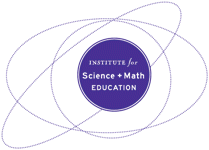Why it is crucial to make cultural diversity visible in STEM education

- Teachers should carefully weave subject matter with activities and images within relevant contexts that validate contributions of individuals from diverse cultural backgrounds.
- District Staff & PD Providers should model making human diversity visible throughout science instruction and connect teachers with relevant resources and communities.
- School Leaders should support science educators in acquiring, adapting, and developing culturally diverse instructional materials and support culturally-based instruction.
What Is The Issue?
To increase student engagement in STEM, we know that students need to see in themselves the potential to pursue STEM interests and careers. One typical approach is to expose students to relevant images of STEM professionals who represent the cultural diversity of our global community throughout instruction. However, to enhance student engagement and make cultural diversity truly visible in STEM, educators must go deeper. For STEM education to support all students in becoming STEM literate, instruction needs to broadly recognize who has done science, for what range of purposes, and how diversity enriches science.
Authors:
BY ALBERTO J. RODRIGUEZ & PHILIP BELL | OCTOBER 2018
Reflection Questions
- Whose interests are being served by the images of STEM endeavors found in instruction?
- How can instruction be crafted to make it more inclusive to diversities of learners and to help students from the dominant culture understand the historical and contemporary diversity of STEM efforts?
Things to Consider
Scientific ways of knowing have been pervasive across diverse cultures throughout human history. Individuals, teams, and communities from all nations and cultures have contributed to science and to advances in engineering. All cultural communities have—and do—engage in science and technology endeavors that relate to their interests, goals, and values. Instruction should represent this diversity of STEM efforts and purposes.
The WEIRD problem of science education. Science education in the U.S. has often centered on Western, Educated, Industrialized, Rich, and Democratic (WEIRD) societies—and predominantly on the work of white men recognized as scientists in society. This narrow view of science has made broad claims about science, and it often dominates the pages of leading journals. It incorrectly and adversely narrows the image of who does science, why they do it, and how it is done.
Scientists’ backgrounds, values, theoretical commitments, and fields of endeavor influence the nature of their findings. This can be seen as making the scientific enterprise more objective (see strong objectivity). Thus, it is imperative to guide students in recognizing that science is a human enterprise by default—inexorably linked to individuals who have the power to define what counts as science and what knowledge is worth pursuing. This critical understanding of the enterprise of science can help students recognize the importance of being scientifically literate and active citizens.
Attending to Equity
- One way that White Supremacy, patriarchy, and late stage capitalism is reinforced in education is by focusing STEM storylines and instructional examples on socially dominant and resource consumption-obsessed efforts.
- The narrative of instructional materials must match and augment the images used to make cultural diversity visible in STEM. That is, it is important to move away from superficial representations of diversity to more culturally and socially relevant activities that promote students’ engagement, agency, and social responsibility.
- Students need to be able to “see themselves” in the scientific endeavor in order for them to feel comfortable engaging in it meaningfully. It is also crucial to make the plurality of sciencerelated sense-making visible to all students—as diversity of perspective and approach strengthens the work of teams and scientific knowledge.
Recommended Actions You Can Take
- Instruction should acknowledge the specific contributions of members from diverse cultures to scientific and technological enterprises related to the topic, practices, and knowledge involved. It is important for these accounts to be substantial, accurate, and respectful to the originating work and community (see examples).
- Diverse images of STEM endeavors should be described in historical, contemporary, and future-focused terms. Do not inaccurately portray the diversity of STEM endeavors of cultural communities as strictly historical ones—as this may inadvertently render diverse communities’ contributions to STEM as something of the past. Highlight how past and present contributions of peoples from diverse communities influence STEM knowledge production today.
- STEM has a broad range of purposes. Highlight a range of purposes for understanding science and engineering, including: community endeavors and justice projects, forms of civic engagement, personal pursuits of learners or families, and 21st century global challenges and decision-making—and not just STEM career possibilities.
ALSO SEE STEM TEACHING TOOLS
STEM Teaching Tools content copyright 2014-22 UW Institute for Science + Math Education. All rights reserved.
This site is primarily funded by the National Science Foundation (NSF) through Award #1920249 (previously through Awards #1238253 and #1854059). Opinions expressed are not those of any funding agency.
Work is licensed under a Creative Commons Attribution-ShareAlike 4.0 Unported License. Others may adapt with attribution. Funded by the National Science Foundation (NSF). Opinions expressed are not those of any funding agency.


 Email Feedback
Email Feedback


